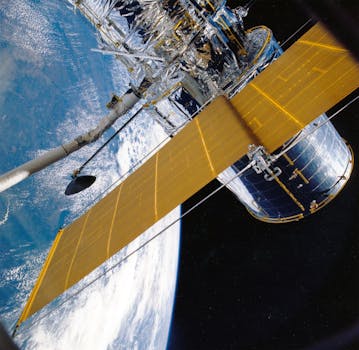
Navigating the Skies: Insights into Recent Satellite Telecommunications Innovations
Satellite telecommunications have come a long way since the launch of the first commercial satellite, Intelsat 1, in 1965. Today, satellite technology plays a vital role in global communications, providing connectivity to remote and underserved areas, and enabling a wide range of applications, from navigation and weather forecasting to television broadcasting and broadband internet access.
Recent years have seen significant advancements in satellite telecommunications, with the development of new technologies and innovations that are transforming the industry. One of the key drivers of this transformation is the increasing demand for high-speed, low-latency connectivity, particularly in the context of emerging technologies such as 5G, IoT, and cloud computing.
In response to this demand, satellite operators and manufacturers have been investing heavily in the development of new satellite constellations, such as OneWeb, Starlink, and O3b, which are designed to provide high-speed, low-latency connectivity to users around the world. These constellations are composed of hundreds or even thousands of small satellites, which are launched into low Earth orbit (LEO) and work together to provide seamless, global coverage.
Advances in Satellite Technology

Another area of innovation in satellite telecommunications is the development of new satellite technologies, such as advanced propulsion systems, more efficient power generation and storage, and improved thermal management. These technologies are enabling the creation of smaller, more efficient, and more cost-effective satellites, which can be launched into orbit at a lower cost and with greater frequency.
For example, the use of electric propulsion systems, such as ion engines and Hall effect thrusters, is becoming increasingly common in satellite design. These systems provide greater efficiency and longer mission durations than traditional chemical propulsion systems, and are particularly well-suited for small satellites and constellation missions.
In addition, advances in materials science and manufacturing are enabling the creation of lighter, stronger, and more durable satellite components, such as solar panels, antennas, and structural components. These advances are helping to reduce the mass and size of satellites, making them easier and less expensive to launch, and improving their overall performance and reliability.
Impact on the Industry

The recent innovations in satellite telecommunications are having a significant impact on the industry, enabling new applications and business models, and disrupting traditional ways of doing business. One of the most notable effects is the increasing competition and falling prices in the satellite communications market, as new entrants and established players alike seek to capitalize on the growing demand for satellite-based connectivity.
For example, the launch of low-cost satellite constellations, such as Starlink and OneWeb, is making high-speed, low-latency connectivity more accessible and affordable for a wider range of users, from consumers and small businesses to large enterprises and governments. This is driving growth in the satellite communications market, and creating new opportunities for satellite operators, manufacturers, and service providers.
At the same time, the increasing use of satellite technology is also driving innovation in related fields, such as data analytics, artificial intelligence, and cybersecurity. As the volume and variety of satellite-based data continue to grow, there is a growing need for advanced analytics and AI tools to process, analyze, and interpret this data, and to extract insights and value from it.
Challenges and Opportunities

Despite the many advances and innovations in satellite telecommunications, there are still significant challenges to be addressed, from the growing problem of space debris and the need for more sustainable and responsible satellite operations, to the ongoing issues of spectrum allocation and interference, and the need for greater international cooperation and regulation.
However, these challenges also present opportunities for innovation and growth, as companies, governments, and other stakeholders work together to develop new technologies, policies, and practices that can help to mitigate these challenges and ensure the long-term sustainability of the satellite industry.
For example, the development of new technologies, such as satellite-based debris removal and recycling systems, is helping to address the growing problem of space debris, while the implementation of more efficient and dynamic spectrum allocation systems is helping to reduce interference and improve the overall efficiency of satellite communications.
See more:






